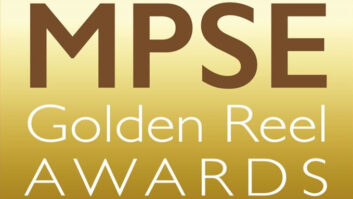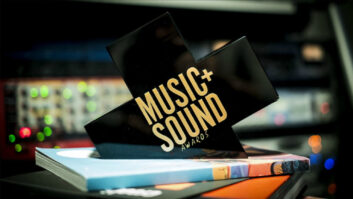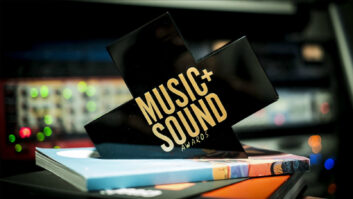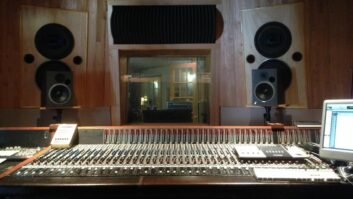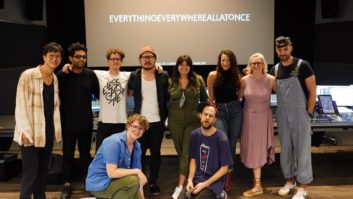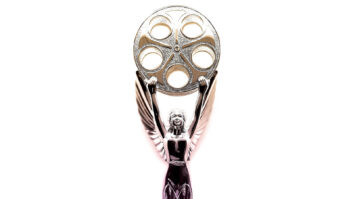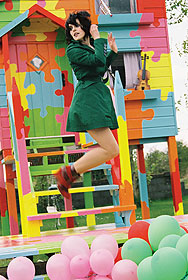
Prepare to meet one of Ireland’s most audacious exports in some time, but first a little history—or rather, a lot of history when you’re talking about singer, composer and orchestrator Julie Feeney. Of course, you could simply absorb her most recent album, Pages (2009, mittens), without knowing any history about Feeney, and that alone would be sufficient. A 12-song collection, Pages instantly hooks listeners with its remarkably adept merging of influences classical to thoroughly modern.
Fittingly, Feeney’s roots lie in Galway, a west coast region known as “Ireland’s Cultural Heart” for its highly concentrated collection of dance, festival, film, visual arts and music groups. Being born into such a vibrant artistic center no doubt had a multitasking impact on Feeney: While establishing herself as a singer, composer and dancer, she earned three master’s degrees quickly, including one in Music and Media Technologies, on the way to a 2002 graduation from Trinity College Dublin.

While her power to connect the dots can clearly be heard on Pages, Feeney has co-created another far-less abstract reflection of musical history in a radio series called High Fidelity: A Century of Recorded Song for Irish Public Service Broadcaster RTÉ. “On many levels, music is crucial and central to people’s lives,” Feeney says. “It’s indispensable. It’s vibrant, it’s the core, it’s a pulse. And music has an innate importance to me; it’s constantly pulsating through me.”
With her Bach-fueled biorhythms (“You can’t live your life until you’ve heard every piece of Bach music”), Feeney and High Fidelity co-host Jack L make every 50-minute episode a continuous source of discovery for the listener. In each, the pair eschew a rigid timeline for an unfolding train of thought, one where Leadbelly, Van Morrison, Nirvana and Woody Guthrie may coalesce in one show; Cole Porter, Frank Sinatra, Eartha Kitt, Judy Garland and U2 in another; and Thomas Edison’s landmark “Mary Had a Little Lamb” meshes with Miles Davis, Enrico Caruso, John McCormack and Scott Joplin in another.

CREATING PAGES
After composing and orchestrating the record’s 12 tracks, Feeney conducted 24 members of the Irish Chamber Orchestra in one day during the course of two pressure-packed sessions at Irish Chamber Orchestra Studio in the University of Limerick, Ireland. For the recording, engineer Ger McDonnell and assistant engineer Edel Griffith set up a pair of mics behind the conductor position and two more at the back of the room, along with close-miking for the various sections, with all signal going into Feeney’s personal Pro Tools rig.
“The Irish Chamber Orchestra Studio has beautiful acoustics, and the moment I stepped in, I knew that it would work for the orchestra,” Feeney says. “I was the first person to record there, as it was only newly built. When I stood in the position of conductor and the musicians played, there was a kind of electric hot spot where the music actually appeared to bounce right in front of my body. It was magical.”
Feeney admits that quickly conducting and capturing 12 songs with some of Ireland’s top string, woodwind and brass players was incredibly stressful, though just as rewarding. “Nobody had heard any of it, apart from me, so I didn’t know whether or not it was any good,” she says. “I had been told, ‘Feeney, if they don’t like it, they’ll let you know,’ so I was pretty scared. The complete opposite happened. The orchestra was extremely positive, lovely, professional, brilliant and possessed incredible musicianship.”
For vocals, Feeney sang into a Neumann U87. “In terms of how I have my voice recorded, my next album will be completely different,” she says. “I want a new departure. It won’t exactly be lo-fi, but you know the way that people love the demo sound—I want to go in that direction with it. I can’t wait to go back, experiment with different mics and see what road I’m going to take. I want to experiment with different spaces. Next time I want to do the singing first, and the rest is going to follow.”
Julie Feeney on Early Recordings
In the making of the High Fidelity Series for Irish Public Service Broadcaster RTÉ, Feeney and co-host Jack L have zeroed in on more than a few microscopic fine points of audio evolution. Below are three examples from Feeney illustrating noticeable aspects of early recordings and why they stand out to her.
1902: Caruso E Lucevan, “Le Stelle” from Tosca by Puccini. “It is so charming to know that this was done on only one take and right before the actual performance. The kind of pressure it must have put on Caruso I cannot imagine, as his adrenalin must have been extremely high at this point. Nowadays, performers would probably not be so obliging! Of course, Caruso had a very keen business sense and very much embraced the idea of commercial sound recordings.
I love this 12-inch acoustic recording, recorded into a metal horn or funnel, which relayed the sound directly into a cylinder or disc via a stylus, because it only captures a very limited range of the overtones and the nuances in his voice. All of his recordings had to be edited to below 4:30, and he would have known that this was the case. All of the preciousness that we have now as performers would have been the same for Caruso, but I am utterly charmed by his embracing all the same. This is a passionate performance and he really “delivers.” I am transfixed by it and can almost hear the excitement surrounding the event. I am very much drawn into this recording because of the drama of the event. I imagine that I am there.
1910: Sophie Tucker (aged 24) “That Lovin’ Rag,” wax cylinder recording for Edison, without the aid of microphones or electricity. “The acoustic process relied solely on the physical energy of the voice or musical instruments for cutting the grooves; there were no volume knobs to adjust. There is obviously a huge difference here between this and the previous one [Caruso’s ‘Le Stelle’], but I really love how it has still captured the energy of the performance. She seems curiously present.
It is hard to properly assess the sound aspects of recordings like this because of the inevitable standardized associations we have at this point with older recordings. There is such a curious charm about them. I do love this recording.
Frieda Hempel singing Schubert’s “Ave Maria” from “Ellens Gesang III.” This is a beautiful recording and it’s a shellac disk. Schubert’s notation is in B-flat, but the recording I have has been transferred at 78 rpm because it gives a more plausible key (A major) for her voice.
—David Weiss
